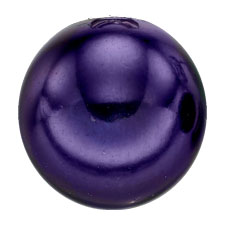Sorry for the inconvenience.
Search again what you are looking for

Cultured Tahitian pearl of dark green-gray to gray-blue color, with pink to mauve lines.
Produced by the oyster Pinctada margaritifera var. Cumingui, who lives in French Polynesia. Each oyster can receive only one implant. They are generally high for 18 months, sometimes longer. They reach a large size, thus producing naturally larger pearls whose diameter varies between 8 and 18 mm. Tahitian pearls are most famous for their dark color. However, the lighter ones can be almost white and the darker ones practically black, but they can also be rainbow, eggplant, blue, gray. The color is specific to each lagoon, each farm and the origin of the graft and the nucleus. The most vibrant colors are rarely perfect because they are obtained with the ends of the grafts which are thinner and more fragile and it is more difficult to prepare a regular graft.
The CIBJO recognizes four categories of pearls: natural pearls (very rare), cultured pearls, composite pearls, imitation pearls. In addition, there are two categories of freshwater or seawater.
The value of pearls is determined by their shape (symmetry), their shine, their size, their color and their weight.
Pearls are divided into eight basic shapes: round, semi-round, button, drop, oval, pear, baroque, banded.
The brilliance (or luster of the pearl) is the most important criterion for judging the quality of a pearl, especially for jewelers; but the larger the pearl, the more expensive it is. Large, perfectly round pearls are very rare, and highly sought after for necklaces with several rows.
The thickness of the mother-of-pearl is a criterion determining the quality of a pearl. Mother-of-pearl can be considered as the essence of the pearl, because it will give it its luster, hue and durability. A thick mother-of-pearl allows the pearl to maintain its hue and appearance durably, unlike the fine mother-of-pearl which, even if it can be very beautiful, will have more trouble lasting over time.
Pearls have been used to make jewelry since Antiquity; they were called Aphrodite's tears. The Roman families who could afford it, bought their daughters one or two pearls each year, so that they had a full necklace when they reached their majority.
Originally, pearl regions were located in the Red Sea. After these were exhausted, the deposits of French Polynesia were exploited. Extremely rare, the Tahitian pearl was found in one oyster in 15,000. In the 1960s, the cultivation of pearl oysters took a considerable scale in Polynesia, under the influence of Japanese industry which made possible the control of pearl production. The substitution of oyster fishing for pearl farming has made it possible to save endangered oysters. The pearl farms producing the Tahitian pearl are located in Polynesian lagoons and mainly the Tuamotu archipel.
The pearl symbolizes children born in June.
The cultured pearl is linked to the sign of Cancer.
It is traditionally offered for the 30th wedding anniversary.
The pearl, called “Margarita” in Greek, was the queen of gems in Antiquity. It is the symbol of love, happiness and luck. Bright and sensual, it perfectly embodies softness and femininity. The pearl is soft, tender and feminine. Like mother-of-pearl, it would provide soothing and well-being; it would have positive effects on the problems of decalcification.
The pearls should be cleaned with a damp cloth.
- Peacock Pearl rings
- Peacock Pearl necklaces
- Peacock Pearl bracelets
- Peacock Pearl earrings
Search again what you are looking for
